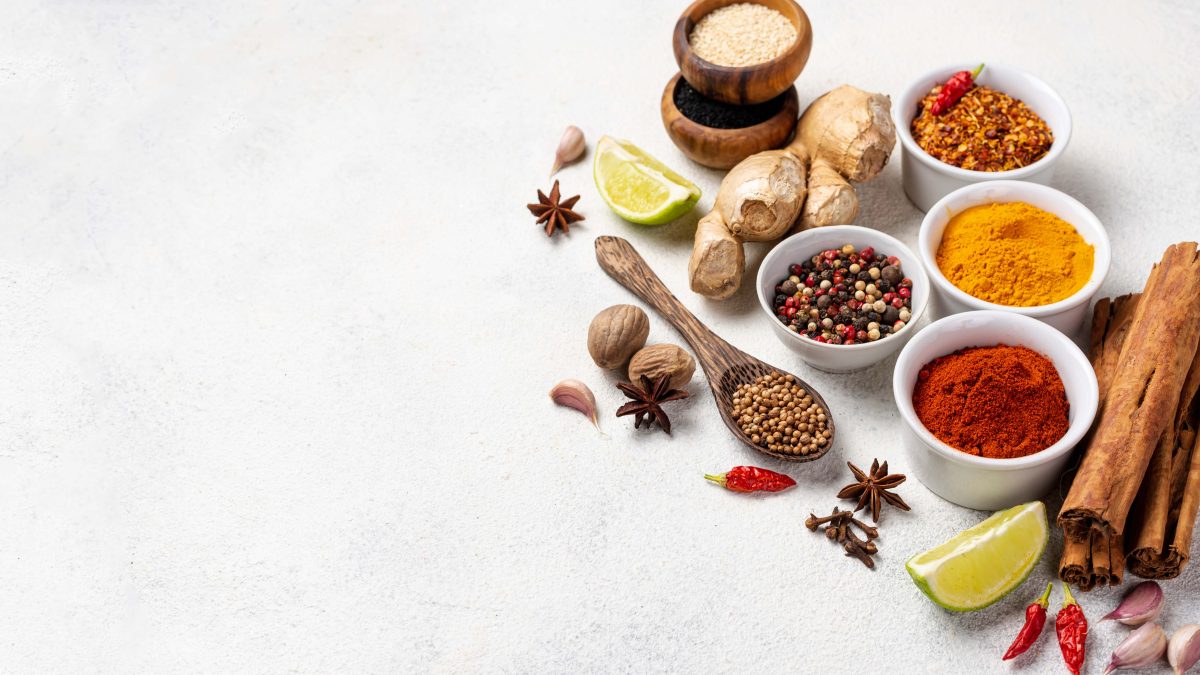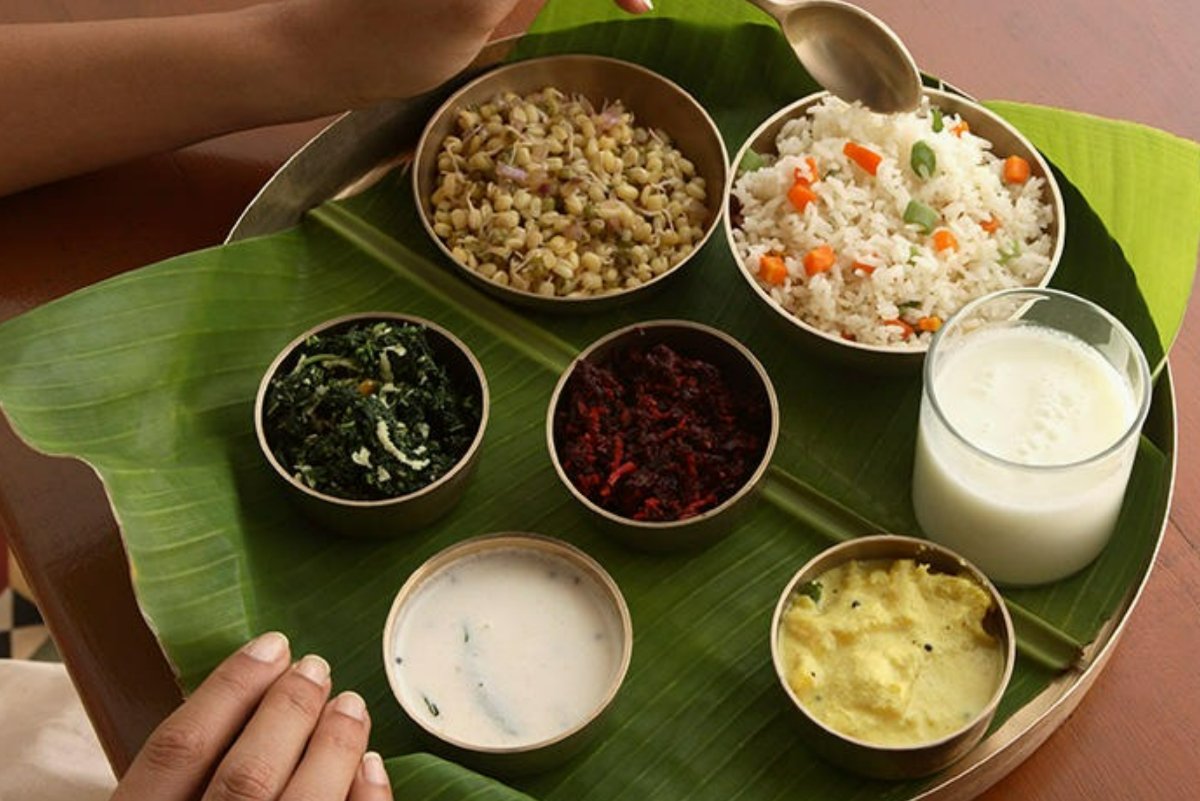

Ayurvedic Diet Plan
The Ayurvedic diet plan is a way of eating that follows the ideas of Ayurvedic medicine. It aims to balance the different energies in your body to make you healthier.
This diet has been used for a really long time, much longer than many other diets. What makes it special is that it gives you personalized advice on what foods are good for you and which ones to stay away from, depending on your body type.
People like this diet not just because it claims to make your body healthier, but also because it says it can make your mind feel better too.
What is an Ayurvedic diet plan?
Ayurveda is a type of medicine from India that looks at the balance between your body and mind. According to Ayurveda, there are five elements in the universe: air, water, space, fire, and earth. These elements create three types of energy in your body, called doshas. Each dosha is responsible for different things in your body. For example, the pitta dosha takes care of hunger, thirst, and body temperature. The vata dosha manages electrolytes and movement, while the kapha dosha helps with joint function. The Ayurvedic diet is part of Ayurveda and has been around for a long time. It involves figuring out your main dosha and eating certain foods to keep all three doshas balanced.
Vata
This is a mix of space and air. People with a vata dosha are imaginative and energetic, but they get tired quickly.
Pitta
This is like mixing fire and water. People with this personality are smart and moody, enjoy eating a lot, and have a good digestion.
Kapha
This is a mix of land and water. Folks with this blend usually have a lot of energy and are really smart.

We Provided All Types Of Ayurvedic Diet Plans
Eating for your dosha
The Ayurvedic diet isn't a strict or set plan. If you want to try it, it's smart to talk to someone who knows about Ayurveda first. It's also a good idea to check with a dietitian, especially if you have health issues. In Ayurveda, they suggest certain foods for each dosha. Remember, these are just general suggestions. Eat what feels good for you.
Vata dosha
Sure! Here's a simpler version: To feel warm, try eating spices like pepper, ginger, and cardamom. Don't mix too many different foods and drink lots of water. Avoid foods that increase "vata," like very sweet or spicy foods, sour fruits, lettuce, tomatoes, buckwheat, millet, white sugar, and honey. It's best to eat oily, warm, hot, soft, and liquid foods, like stews and soups, for this type.
Pitta dosha
If you have a lot of pitta in your body, it's best to steer clear of spicy stuff like chili and pepper. Skip acidic foods like salad dressing, tomatoes, and plain yogurt too. Instead, go for foods like milk, cheese, sweetened yogurt, green veggies, and grains.
Kapha dosha
According to Ayurveda, if you have a lot of kapha in your body, you should eat foods that have a strong and bitter taste, like garlic, ginger, peaches, and pears. It's good to use different spices in your cooking. But, try not to eat too much oily and fatty foods, root vegetables, or frozen foods if you are a kapha person. It's better for your health.

Make An Appointment
Benefits of Ayurvedic Diet Plan
It may offer similar benefits to other healthy, nutrient-dense diets.
It is not a restrictive diet. The focus is not on reducing calories or losing weight, but instead on attaining good overall health.
It encourages a person to think about what they eat, carefully weigh their needs, and make food decisions based on those needs
A person may use Ayurvedic eating as part of their spiritual or cultural practices. The diet may be personally meaningful, incentivizing a person to stick with it.
It may help reduce obesity.


Understanding the Principles of an Ayurvedic Diet
Ayurveda, an ancient holistic healing system, provides a unique diet plan that is relatable and specific to one's constitutional type or dosha. Awareness that Vata, Pitta, and Kapha can be found in different quantities in each individual implies that the Ayurvedic diet suggests giving foods that nourish and balance the body. This system shows that a healthy diet and digestion are the fundamental factors that govern health maintenance and keep diseases at bay.Customizing Your Diet to Your Dosha
The idea of personalization is the main characteristic of Ayurvedic dietetic advice. Your primary dosha determines the emotional and physical benefits of the various kinds of food. For instance, Vata types have high recommendations for warm, moist, and grounding foods to balance their natural chill and dryness conditions. The Pitta types of the constitution need cold, watery, and soft foods because they inherently generate heat. In contrast, the Kapha types are advised to take energizing and stimulating foods to counteract their tendency to be lazy.


Ayurvedic Foods to Favor and Avoid
For each dosha, there is a set of foods that help maintain balance and a set that may cause imbalance. Vata people should refuse cold and hard foods as they aggravate their poor digestion. Pittas should avoid overeating spicy and sour foods as they can easily upset their nature. Kaphas are advised to moderate heavy and oily foods, which tend to slow down the pace and fat gain. Through these guidelines, people can improve their health and their lives.Integrating Ayurvedic Diet into Modern Lifestyles
What you need to start with an Ayurvedic regimen doesn't require a drastic change in your present dietary habits but can be implemented gradually into your current diet. First, commencing with simple modifications like adding spices that help with digestion or adjusting meal times can have a mighty difference. However, modern-day eating patterns do not often consider personalization; thus, adopting Ayurvedic principles becomes necessary to enjoy improved health outcomes by catering to individual needs.

FAQ's For Composite Veeners
The Ayurvedic diet is an eating plan that is developed based on Ayurvedic principles and which is used to improve health by balancing the three doshas—Vata, which represents the mind; Pitta, which stands for the body; and Kapha, which identifies the body. I am using a diet designed according to one's dosha, which encourages one to pick foods meant to restore balance and well-being.
The Ayurvedic diet is an eating plan that is developed based on Ayurvedic principles and which is used to improve health by balancing the three doshas—Vata, which represents the mind; Pitta, which stands for the body; and Kapha, which identifies the body. I am using a diet designed according to one's dosha, which encourages one to pick foods meant to restore balance and well-being.
Ayurveda's diet achieves this by balancing the three doshas in the body by eating beneficial foods. From this eating pattern, those in imbalances can reduce symptoms like digestion problems, fatigue, and stress and, as a result, improve their general health status.
The diet principles focus on eating with attention, considering foods not harmonious with your dosha, and steering clear of them. Thus, this gradually leads to healthier meal options and fewer portions an individual would want to consume, thereby managing their weight.
For Vata types, some warmly moist and oilily foods are positively active. Pitta-type people must blend with foods with a cooldown, dryness, and sweetness, which can resolve their 'heat' nature. Pitta doshas can exponentially increase the rate of the metabolism and thereby have to be balanced with light, dry, and hot foods to compensate for the Kapha types.
Vata should avoid these temperatures. It is advisable to envisage Vata as non-air, dry, and cold. This food category encompasses various hot, spicy, and sour-based meals. So, Kapha should stay clear of his sweet, heavy, and oily foods to change his imbalance.
A thorough consultation with an Ayurvedic specialist who considers appearances, behavioral traits, and way of living can enable him to state which is a dominant dosha in you proudly.
Hear from our clients
EXCELLENTTrustindex verifies that the original source of the review is Google. "I recently visited Rama Care Poly Clinic, and I had a very positive experience. The staff was friendly, professional, and attentive, making me feel comfortable from the moment I walked in. The doctors were knowledgeable and took the time to explain my treatment options thoroughly, which I really appreciated. The clinic was also clean and well-maintained, which added to the overall sense of care and professionalism. I would definitely recommend Rama Care Poly Clinic to anyone looking for quality healthcare services. Thank you to the team for a great experience!"Trustindex verifies that the original source of the review is Google. I had the best Treatment today for my Laser and pain-free and I also had my Ayurvedic Treatment. Thanks Rama Car for the services and taking good care..Trustindex verifies that the original source of the review is Google. All the staff was friendly, the are professional, Therapist know what is my concern, they know what is the next treatment I should do, they also advice for home care. My treatment was Ayurvedic massage and HydraFacial. All of them is amazing. They have many kind services . Place very easy to find. Thank you Rama care clinic, I will recommended . ❤Trustindex verifies that the original source of the review is Google. I was impressed with the service of the clinic. All the reception and therapists were lovely and kind. Sonita gave me advice on what I needed. She is knowledgeable and professional.Thank you so much. Recommend Rama Clinic.Trustindex verifies that the original source of the review is Google. Had an amazing session with the beauty therapist Mrs. Sonitha! I've seen noticeable improvements in my skin. She is incredibly skilled, dedicated, and attentive. And also , all the staffs are very friendly Be it doctors , therapists , receptionists- everyone out there give that ‘home’ feeling Highly recommend !Trustindex verifies that the original source of the review is Google. Very friendly staffs and therapist are very professional.Shout to Sonita for doing my facial very happy with the result. Definitely coming back to try there other treatments ❤️Trustindex verifies that the original source of the review is Google. "I had such a wonderful experience here! The staff is incredibly friendly and welcoming, making me feel right at home from the moment I walked in. The cozy environment adds to the overall relaxing vibe, perfect for unwinding. A special shoutout to Ate Sonita, who went above and beyond in taking care of me. She’s truly such a caring and thoughtful employee, ensuring that every detail was perfect. I highly recommend this place for anyone looking for excellent service and a warm, inviting atmosphere!"Trustindex verifies that the original source of the review is Google. Friendly and Professional Staff!! Love Dr Sadia!! Not only that, Ayurveda treatment I got was very good, reduced my shoulder and neck pain dramatically. Highly recommend!Trustindex verifies that the original source of the review is Google. I highly recommend Rama Care Polyclinic. I got the Dental, Ayurveda and Facial treatments and I am very satisfied with their services. High five to all the Doctors and staff as I had a pleasant and amazing experience with them.
Meet Our Expert Medical Team Dedicated To Your Wellness
Dr. Varsha Jayasimhan
Ayurvedic DoctorDr. Jeena Mathew
PhysiotherapistDr. Ifada Rohmah
General PhysicianDr. Nabeela Jamshed
General DentistSoumya Abraham
NurseStay Updated With Our Latest News And Blog Articles
- By: admin
- June 4, 2024
- No Comments
Is Electrotherapy Safe During Pregnancy?
- By: admin
- June 4, 2024
- No Comments
Shockwave Therapy vs Electrotherapy
- By: admin
- June 10, 2024
- No Comments








